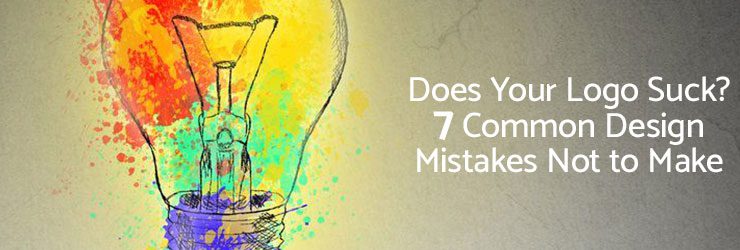What are Some Best Design Practices for Creating a Logo
Do customers hold a strong memory of your company in mind? If not, you may want to connect with customers everywhere they go and create a logo that truly represents your business.
The purpose of a logo is to establish a visual presence and display a symbol that instantly connects your audience to you and what you do. The best logos speak to your audience with the use of metaphors and can be intuitively understood by your customers.
Did you make these common design mistakes with your logo creation?
You Didn’t Spend Enough Time Sketching Concepts
Ask for several versions of the type of logo you have in mind. A few quick sketches should help direct the design in a way that speaks to your company and customer by giving you plenty of options.
Always take your time in the brainstorming stage of the logo creation process to be certain that you’re choosing the right colors, shapes, and fonts to make adjustments before finalizing the finished product. Remember that changing your logo could cost a lot of time and money, so get it right the first try with an advertising agency you can trust.
The Message and Typography are Unclear
If you choose to add text to your logo, use a unique font that stands out. Steer clear of common fonts or a jumble of various font types that don’t mesh well together. If you use a font that everyone’s already seen, it may also make your logo look generic. Keep in mind that adding too much text to your logo could take away from the actual message. The purpose of a logo is to capture your customer’s attention in an instant.
Your Logo is Too ______.
Unprofessional, boring, colorful, dull, confusing, blurry on the edges, or just plain ugly. If your logo is ugly, not many people will respond well to it. No matter how boring your industry or market may be, always use a logo that excites your customers into choosing your company over the competition.
It’s Way Over Dramatic.
Your logo is too much for people to handle — so opt to drop the dramatic effects. Did you add a bit of drama to your pictures and fonts to capture your customers’ attention? Keep things looking clean and concise by dropping the dramatic effects for clean edges and linear colors. Good design is easy on the eyes, and all the clutter is actually much more difficult for your brain to process and may pose as a distraction, instead.
Use Color to Your Advantage.
Choose your colors wisely. One secret that separates an adept creative media company like Disney from the competition is the science they apply to design. That is, there is a psychology to the emotion that each color provokes.
hot colors – red, orange, yellow
cool colors – green, blue, violet
Hot colors inspire excitement and action, while cool colors are used to calm or relax. If you’re trying to achieve a more serious look, keep the colors to a minimum or distinguish your image with clean lines cut with black and white.
Achieve Balance with Design Elements
When the image is finished, it should look “complete”. Use like shapes, like colors, and establish continuity to keep the flow going, so that nothing grabs the attention to take away from the rest. A logo design should be a solid stand-alone object.
Use the Power of Symbols
Want your business to be remembered by many? Apply a symbol to your logo, and gain your own unique space in your customers’ brains. Symbols are an easy way to shape your company’s brand identity into a label that makes sense. Logos are a perfect place to apply symbols that act as metaphors.
Need help creating an unforgettable logo for your business?
Let us take care of it. Learn more about our marketing programs, and contact Oyova — a Jacksonville, Florida web design, content marketing, social media management, and eCommerce web development company.
VIEW THE SLIDESHARE:
SOURCES:



